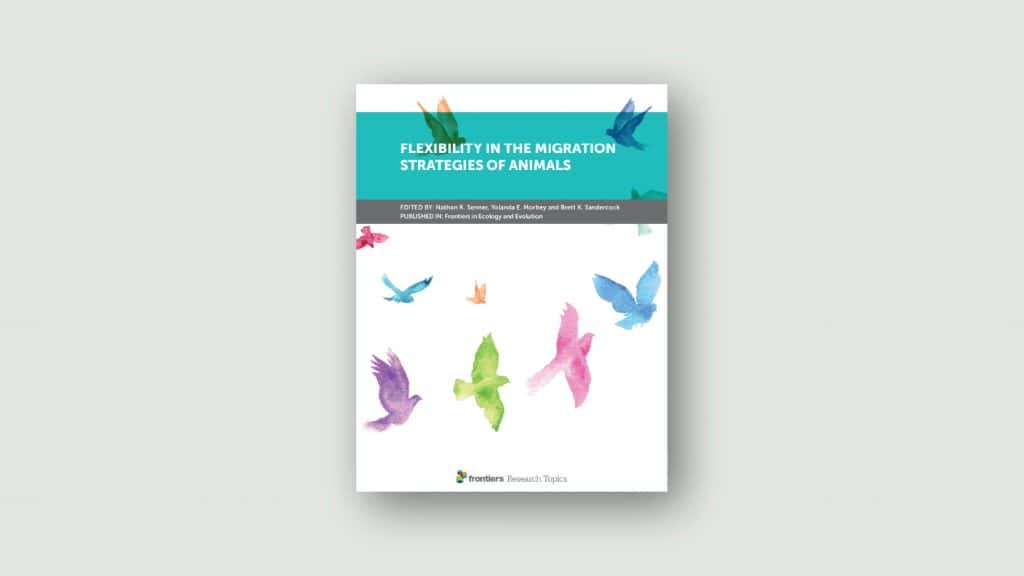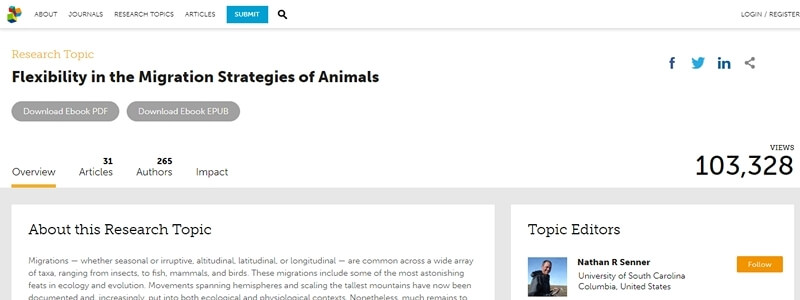Migrations — whether seasonal or irruptive, altitudinal, latitudinal, or longitudinal — are common across a wide array of taxa, ranging from insects, to fish, mammals, and birds. These migrations include some of the most astonishing feats in ecology and evolution. Movements spanning hemispheres and scaling the tallest mountains have now been documented and, increasingly, put into both ecological and physiological contexts. Nonetheless, much remains to be learned about these migrations, especially pertaining to how and why individual organisms within a population or species differ in their migratory behaviors. Given the frequently strong connection between an individual’s migratory behavior, life-history strategy, and fitness, gaining a deeper understanding of these behaviors will likely improve our broader understanding of how life-history strategies evolve and may be responsive to environmental change.
This Research Topic will therefore focus on research that aims to understand how migratory behaviors may change over the course of an individual’s life and why they may differ among individuals in a population or between different populations across a species’ range. This includes investigations of partial migration — when some individuals in a population migrate, but others do not — and differential migration — where an individual’s migratory behavior changes with age — as well as the potential plasticity and flexibility of migratory behaviors. Some of these phenomena, such as partial and differential migration, have a long history in the literature, but remain poorly understood. Others, such as the flexibility of migratory behaviors in response to climatic and environmental change, represent the vanguard of migration studies. For instance, recent research has shown that some individuals can exhibit highly repeatable migratory behaviors, while the behaviors of others are far more flexible, and these individuals can alter their migratory routes and timing from year to year. Similarly, within some species, some populations can show evidence for strong developmental plasticity in migratory behavior, while others do not, and continue to exhibit the same migratory timing and follow the same migratory routes even when more optimal alternatives may exist. These studies are opening new windows into our understanding of how changing environmental conditions can rapidly alter the migratory behavior of individuals and populations.
We thus seek to highlight research from across migratory taxa that takes an ontogenetic perspective on migratory behavior and which can help put migration into a broader ecological, behavioral, and evolutionary context.
Interested in videos created exclusively for bookworms?
Watch videos about books, reading and writing. Expect weird, amazing, never known before facts and many more.





